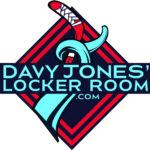It’s here! The biggest day of the National Hockey League offseason since the Entry Draft — the day that free agency officially begins. As of 9am PDT today, teams can officially begin to negotiate and sign unrestricted free agents. Unofficially, plenty of deals have been in the works for some time now, and they can be announced as soon as the window opens — so expect a whole lot of news at 9am sharp.
Note: Nearly all of the data in this piece comes from Cap Friendly, the best resource for contract-related news in the NHL
The Kraken traded away most of their pending free agents at the deadline last year, but there are still a few players that didn’t get traded whose contracts expire today and will likely be moving on to another team. Here’s the full list, courtesy of Cap Friendly:
The most notable loss is forward Ryan Donato. Donato provided the Kraken with depth scoring and some sweet shootout moves, but it wasn’t enough for Seattle to extend a qualifying offer to him (more on that in a second).
The other departures combined for a total of 40 points in 152 player-games, with only Haydn Fleury and Riley Sheahan topping at least 300 minutes of ice time. Altogether, Seattle is essentially losing a bit of depth, but nothing too major.
RFA vs UFA
There are two types of free agents in the NHL: restricted (RFAs) and unrestricted (UFAs). Players become unrestricted free agents once they either turn 27 years old or once they have accrued 7 seasons in the NHL, where an accrued season is considered being on the active roster for 40 games in a season for skaters and 30 games for goaltenders.
UFAs can be signed by any team beginning today. RFAs who received what’s called a qualifying offer can negotiate with another team, but their current team has the power to match any contract offer the player agrees to with a different club. Any RFAs who did not receive a qualifying offer (like the aforementioned Ryan Donato) automatically become unrestricted free agents at the start of the new league year — today at 9am.
One-way vs two-way contract
A frequent misunderstanding with regards to NHL contracts — one which I myself had for years, leading to some infuriating moments of Chel franchise mode as I angrily sent players through waivers that I was confident shouldn’t have had to pass through waivers — involves the difference between a one-way contract and a two-way contract.
Players on two-way contracts are not exempt from passing through waivers if they get sent down from the NHL to the AHL. The only difference between a one-way and a two-way contract is that skaters with one-way contracts make the same salary , regardless of which league they play in. Skaters on two-way contracts receive a different salary depending on whether they are in the NHL or the AHL.
Take, for example, Alex True. True signed a one-year, two-way contract with Seattle in August of 2021. He played 8 games in the NHL with Seattle, during which time he made a (prorated) salary of $750,000. During his 60 games in the AHL, he made a (prorated) salary of $200,000. Had his contract been of the one-way variety, he would have made the $750,000 salary all season long.
Waivers
This part is more important during the season than it is right now, but since we’ve already dabbled in it, here’s a rundown of waivers. Any player that gets sent down to a minor league from the NHL must pass through waivers, which allows any other NHL team to claim them — at which point the claiming team would immediately take on the player’s contract. Certain players are exempt from waivers, and it has to do with how old they were when signing their first pro contract and how much professional experience they have. The full details of who is and isn’t waivers exempt can be found at the ever-wonderful Cap Friendly.
Salary cap (and floor)
The NHL features a hard salary cap of $82.5 million for the 2022-23 season. It’s expected to increase by about $1 million each year for the next three years. There is also a salary cap floor that teams must adhere to. The salary floor this year is $61 million, and teams cannot have a roster during the regular season with a cap hit below that floor.
Heading into free agency, the Kraken have a cap hit of$60.5 million, leaving them with $22 million in cap space.
Minimum salaries, AAV, & contract length
Most contracts signed in the NHL are reported with their Average Annual Value, or AAV. That’s simply the total contract value divided by the length of the contract. Unlike with some other sports, like the NFL, a player’s cap hit will always be defined as his AAV — so frontloading or backloading a contract can change the cash flow from owner to player, but has no other effect as far as the roster is concerned.
The minimum salary for an NHL contract for the 2022-23 season is set at $750,000. There is no maximum contract value, but the highest AAV contract in the league belongs to Connor McDavid, at $12.5 million. Don’t expect anyone to top that. The maximum duration of a contract for a player signing once free agency opens is 7 years.
There you have it, that’s the basics. So who are you hoping to see the Kraken sign today? Big names? Small names? Everything in between? Let’s hear it!
Live Updates
The Kraken are expected to sign goaltender Martin Jones to back up Philipp Grubauer this year.
Justin Schultz is reportedly signing a 2-year deal with Seattle.
Winger Andre Burakovsky is reportedly signing a 5-year, $5.5 million AAV deal to come to Seattle.

 Leave a tip to support our writers and staff!
Leave a tip to support our writers and staff!